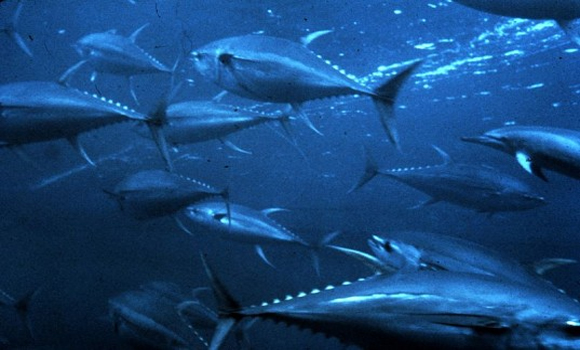
Bluefin Tuna From The Fukushima Nuclear Meltdown Still Have Traces Of Radiation
Monte Burke Forbes
Last May I wrote a piece about Bluefin tuna caught off the coast of southern California that carried radiation from the Fukushima, Japan, nuclear plant that was damaged in the March 2011. The fish were caught in August 2011 as they migrated east 6,000 miles from their spawning grounds in Japan in search of prey.

In that piece I talked about how, perhaps counter-intuitively, the radiation—which scientists say do not harm the fish—could actually be a good thing for the fish population. Bluefin, found in the Atlantic and northern and southern Pacific, are among the most prized table fish in the world (a single 489-pound fish fetched $1.76 million at a Tokyo fish auction last month). Because of that, their stocks have plummeted to dangerously low levels. Scientists assert that the radiation levels found in these tuna are not high enough to harm humans. But it is safe to say that the general dining public does not like to hear about radiation in their food.
Last week one of the authors of the study from last year, Daniel J. Madigan from Stanford University’s Hopkins Marine Station—along with five other scientists— published a new follow-up study. The main question that this new study wanted to answer: Would the migratory Bluefin tuna show up again a year later off the coast of California carrying radiation from Fukushima?
The answer was yes. (See below for the PDF of the study.) That means, ultimately, that there is still a high level of radiation in the waters near the Fukushima plant most likely because, as marine chemist, Ken Buessler, asserts, the plant is still leaking radiation into the ocean nearly two years later.
Madigan, in a phone interview, pointed out another interesting fact that he and his partners discovered: The radiation is, over time, excreted by the Bluefin. It is found in the fish’s muscle tissue and just the act of swimming eventually helps them work it out of their bodies. Some of the fish they sampled (from recreational catches) showed no traces of radiation after a year of swimming in and around California waters.
(As a side note, the Pacific Bluefin, once believed to be among the healthiest populations of Bluefin, were recently discovered to have dropped 96.4% from unfished levels.)
Bluefin remain a heated topic among scientists, environmentalists and commercial fisherman. Madigan also pointed out that his initial study was attacked by vocal members of both the environmental community (which charged him with underplaying the radiation levels in some sort of government conspiracy) and the commercial fishing community (which accused him of overplaying the radiation levels as some sort of environmentalist conspiracy).
